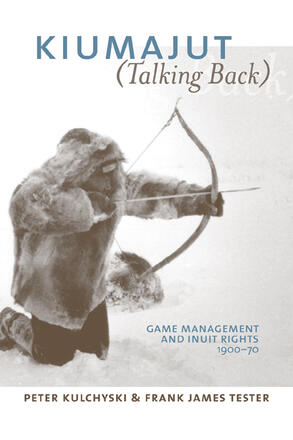
Kiumajut (Talking Back)
Game Management and Inuit Rights, 1900-70
Description
Kiumajut [Talking Back: Game Management and Inuit Rights 1900-70 examines Inuit relations with the Canadian state, with a particular focus on two interrelated issues. The first is how a deeply flawed set of scientific practices for counting animal populations led policymakers to develop policies and laws intended to curtail the activities of Inuit hunters. Animal management informed by this knowledge became a justification for attempts to educate and, ultimately, to regulate Inuit hunters. The second issue is Inuit responses to the emerging regime of government intervention. The authors look closely at resulting court cases and rulings, as well as Inuit petitions. The activities of the first Inuit community council are also examined in exploring how Inuit began to “talk back” to the Canadian state.
Reviews
This book is a rich story, weaving together the elements of policy and people. […] The case study approach and choice of the Inuit is of particular value in that it clearly identifies the limits of “objective” science and makes the case for what is now accepted as the importance of traditional knowledge. […] Though this book is not intended as a cautionary tale for current policy makers, it will be of interest to academics, students and policymakers alike as it sheds light on the challenges and conflicts ever-present in regulating Aboriginal people.
- Gabrielle Slowey, TOPIA, Issue 20